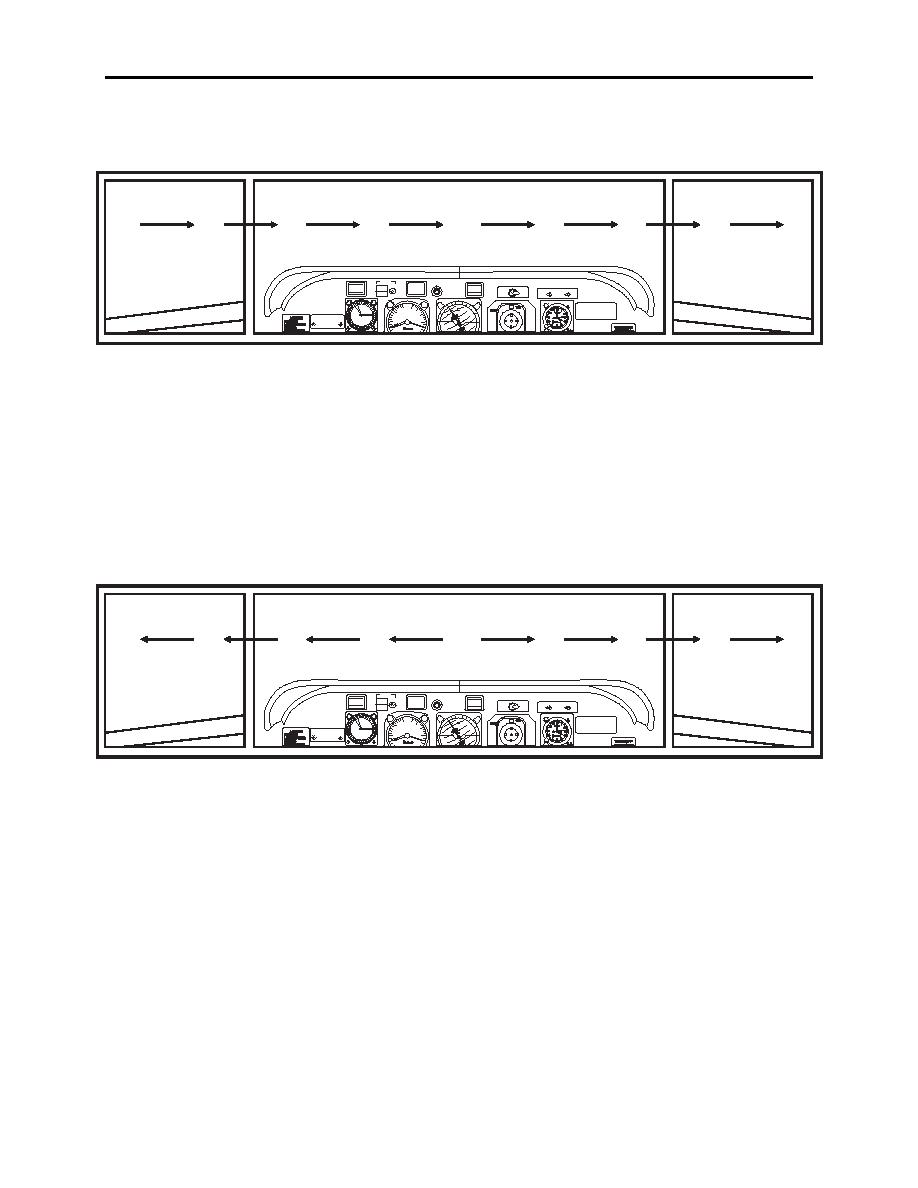 |
|||
|
|
|||
|
Page Title:
Figure 4-3. Side-to-Side Scanning Method |
|
||
| ||||||||||
|
|  T-34C CONTACT
CHAPTER FOUR
There are other methods of scanning, some of which may be more effective for you than the
preceding type. Figures 4-3 and 4-4 illustrate other frequently utilized outside scan patterns.
1
2
3
4
5
6
7
8
INBOARD
GEARDOOR
MASTER
TERE
SYS
WHEELS
LHOPEN
FIRE
ANT
CAUTION
RADIO
VHF
REC
VOR
ACAN
RHOPEN
UHF
VHF
OFF
ON
TEST
O
CAUTION
K
F
400 4060
F
FUELFLOWINDICATIONAND
20
STANDBYCOMPASSERRATIC
350
WHENIGNITIONOPERATING
KNOTS 80
BUNO
0
300
100
160265
10
250
150
Figure 4-3 Side-to-Side Scanning Method
Start at the far left of your visual area and make a methodical sweep to the right, pausing in each
block of viewing area to focus your eyes. At the end of the scan, return to the panel.
An equally effective scan pattern is the front-to-side method illustrated in Figure 4-4. In this
pattern, start in the center block of your visual field (center of front windscreen), move to left
focusing in each block, then, after reaching the last block on the left, swing quickly back to the
center block and repeat the performance to the right. There are no real advantages or
disadvantages of one method over the other. Use the technique that works best for you.
4
3
2
1
5
6
7
8
INBOARD
GEARDOOR
MASTER
TERE
SYS
WHEELS
LHOPEN
FIRE
ANT
CAUTION
RADIO
VHF
REC
VOR
ACAN
RHOPEN
UHF
VHF
OFF
ON
TEST
O
CAUTION
K
F
400 4060
F
FUELFLOWINDICATIONAND
20
STANDBYCOMPASSERRATIC
350
WHENIGNITIONOPERATING
80
KNOTS
BUNO
0
300
100
160265
10
250
150
Figure 4-4 Front-to-Side Scanning Method
In order to establish an efficient and useful scan in flight, one also has to establish a good
internal (instrument) scan and learn to give each instrument its proper share of time. The amount
of time spent scanning outside the cockpit in relationship to inside depends on cockpit workload
and traffic density.
Remember, while you are looking at the instruments, the nose attitude and wing position may
become erratic, and while you look at the nose position and correct it, the instrument readings
may vary. You cannot afford to gaze at any one item for any length of time or the pattern will be
broken (this is referred to as "fixating"). Instead, scan each position, initiate corrections, and
then check those corrections when you return to that position in the scan pattern. Be alert! Look
around! Remember that under you is a blind spot. Never assume that others see you!
FUNDAMENTAL FLIGHT CONCEPTS
4-9
|
|
Privacy Statement - Press Release - Copyright Information. - Contact Us |